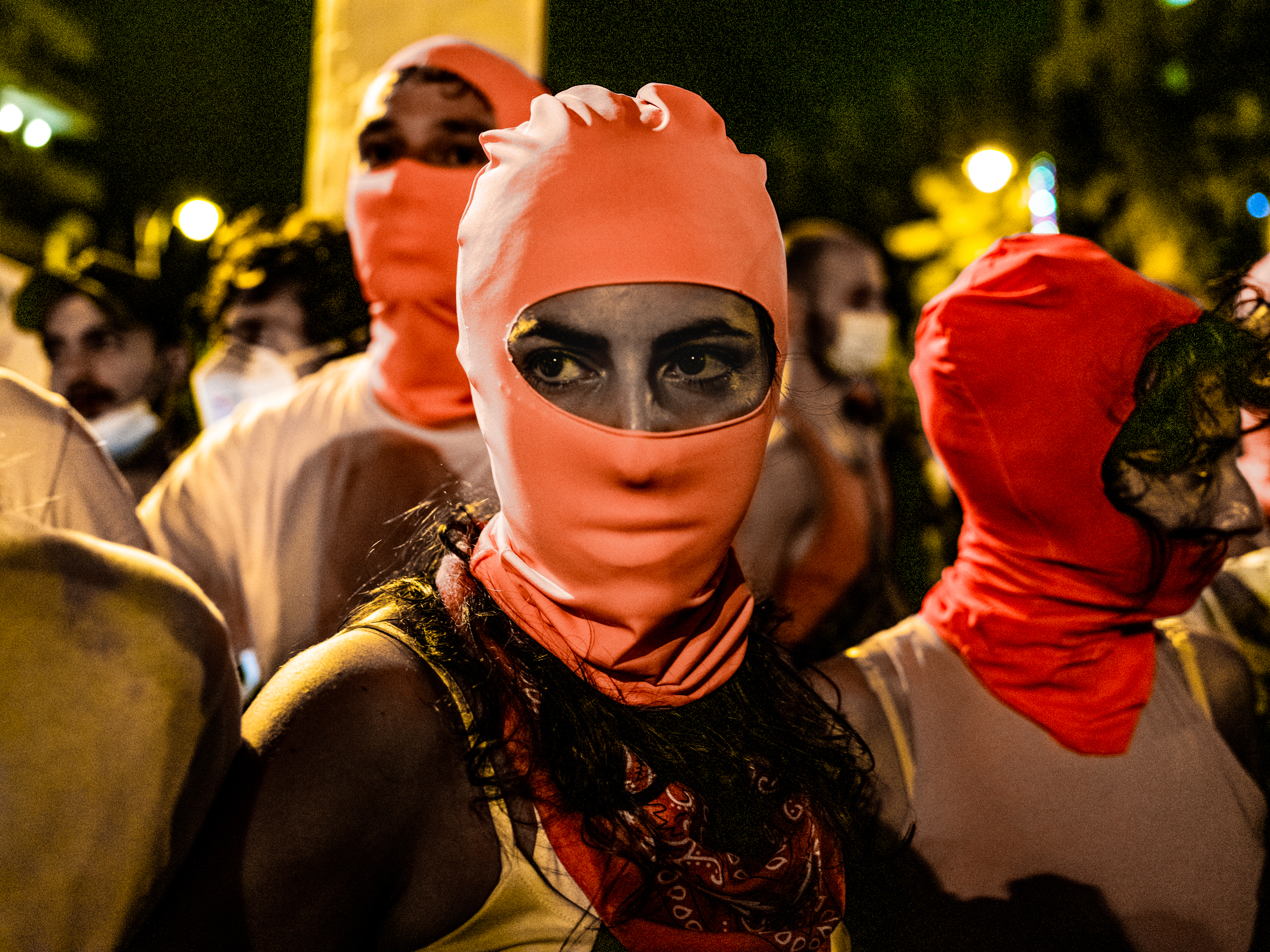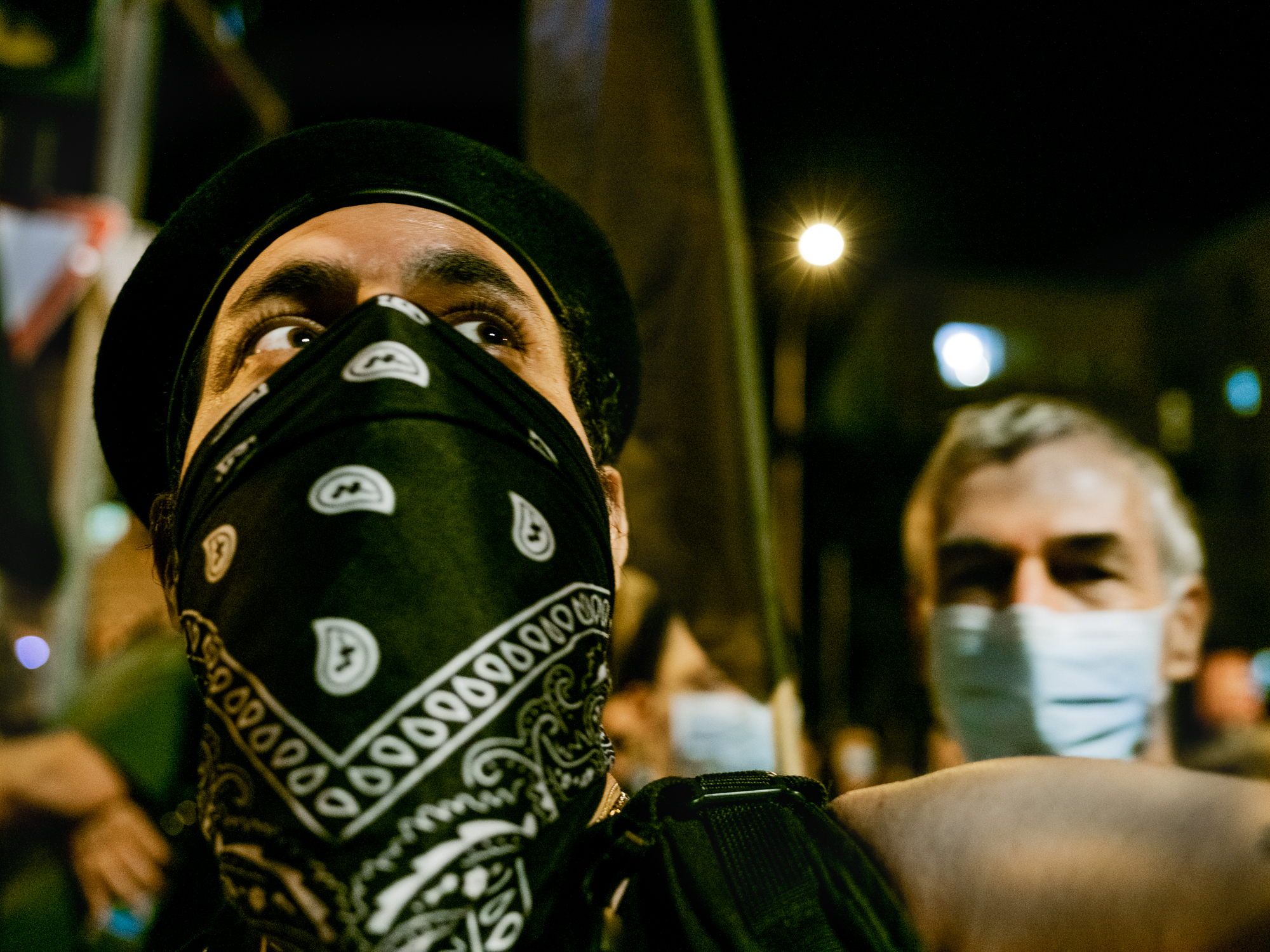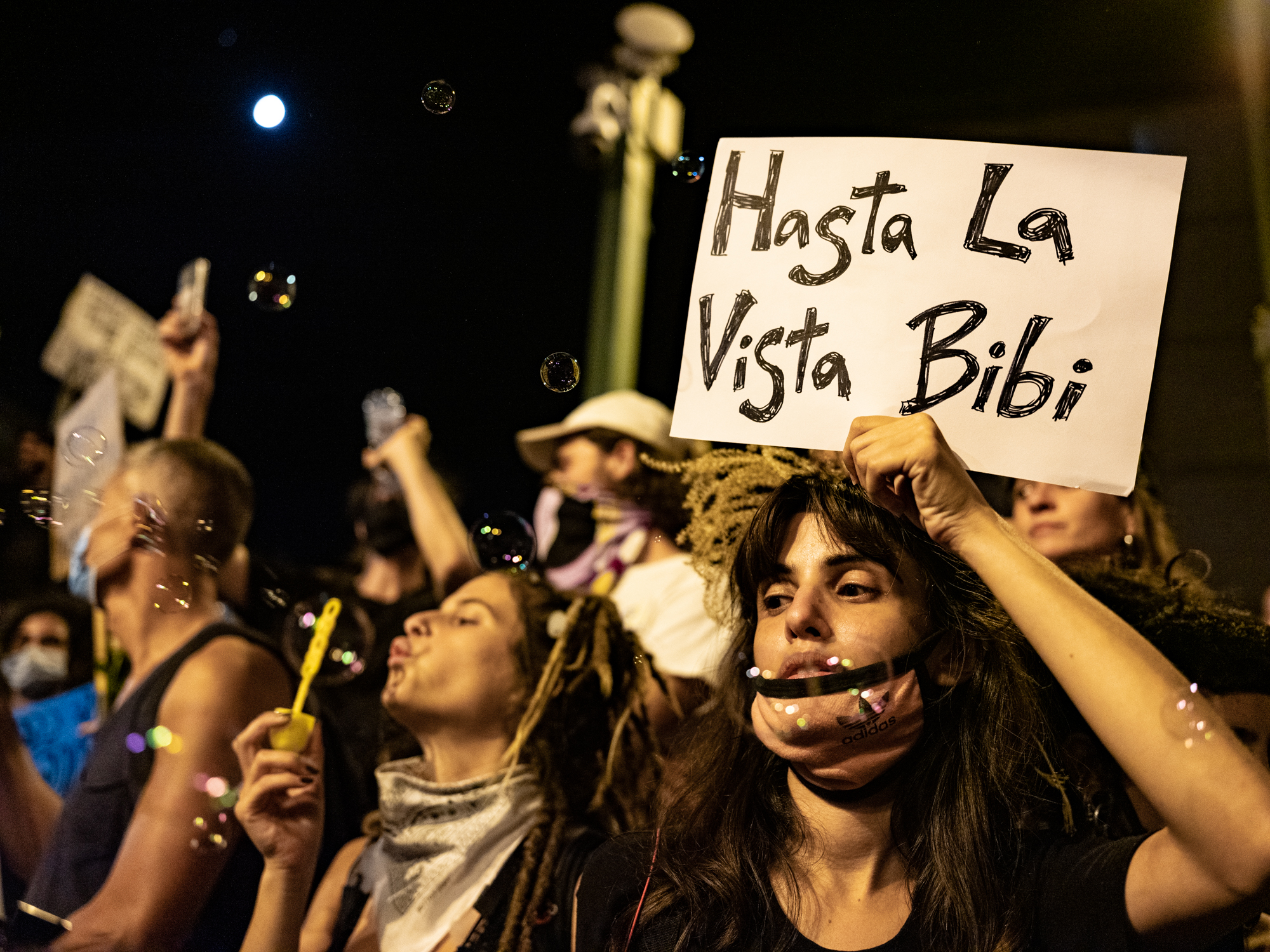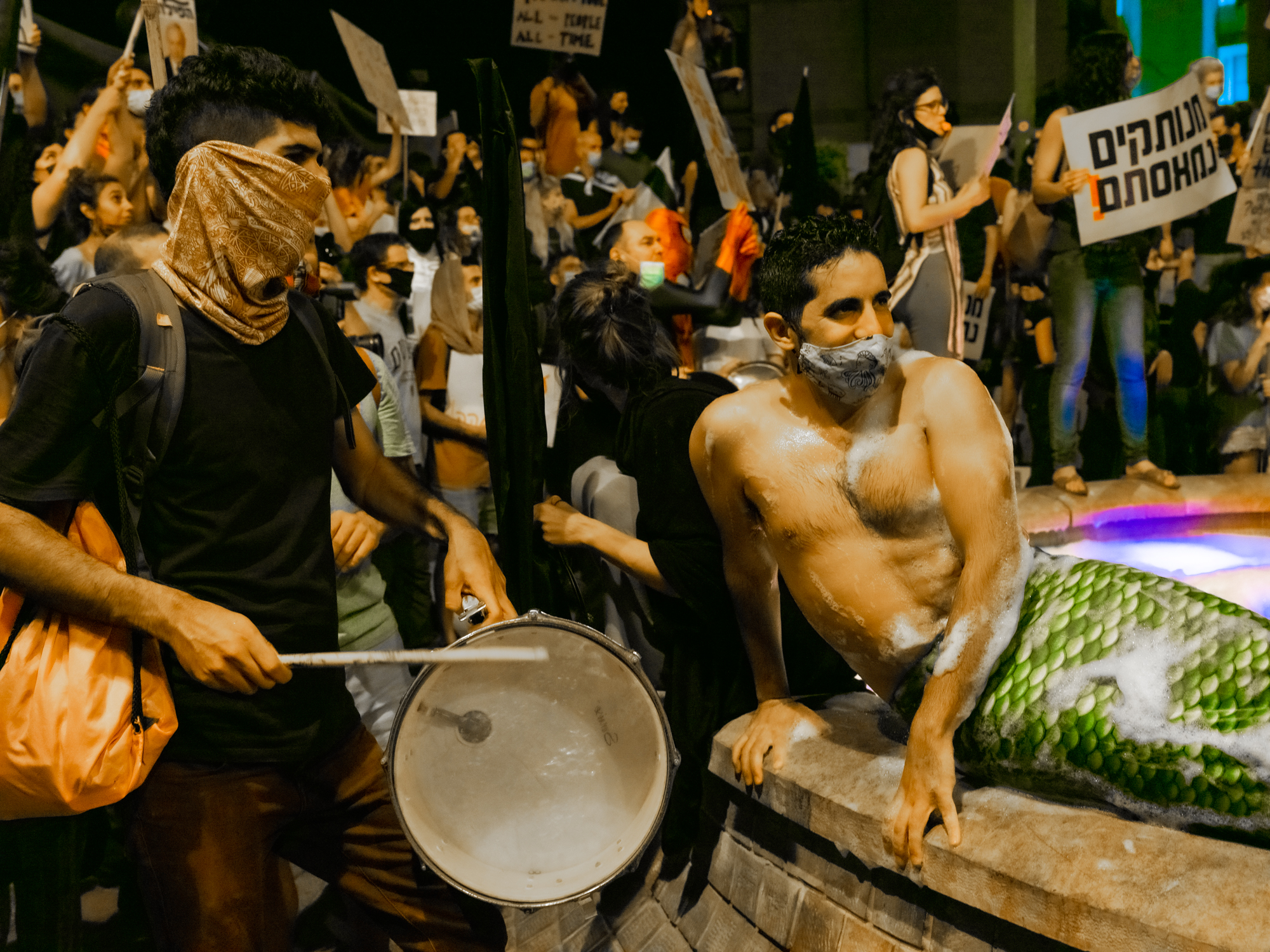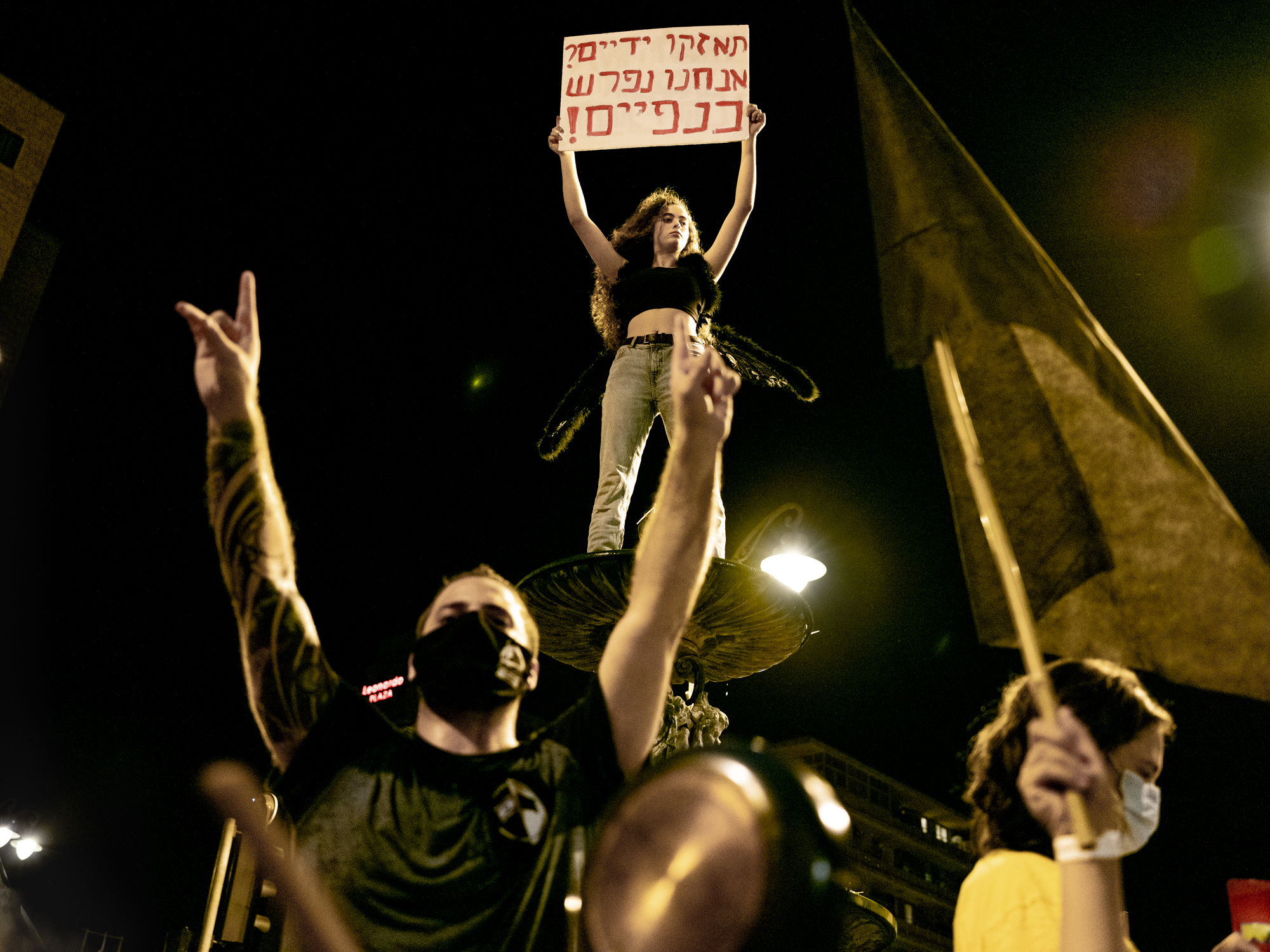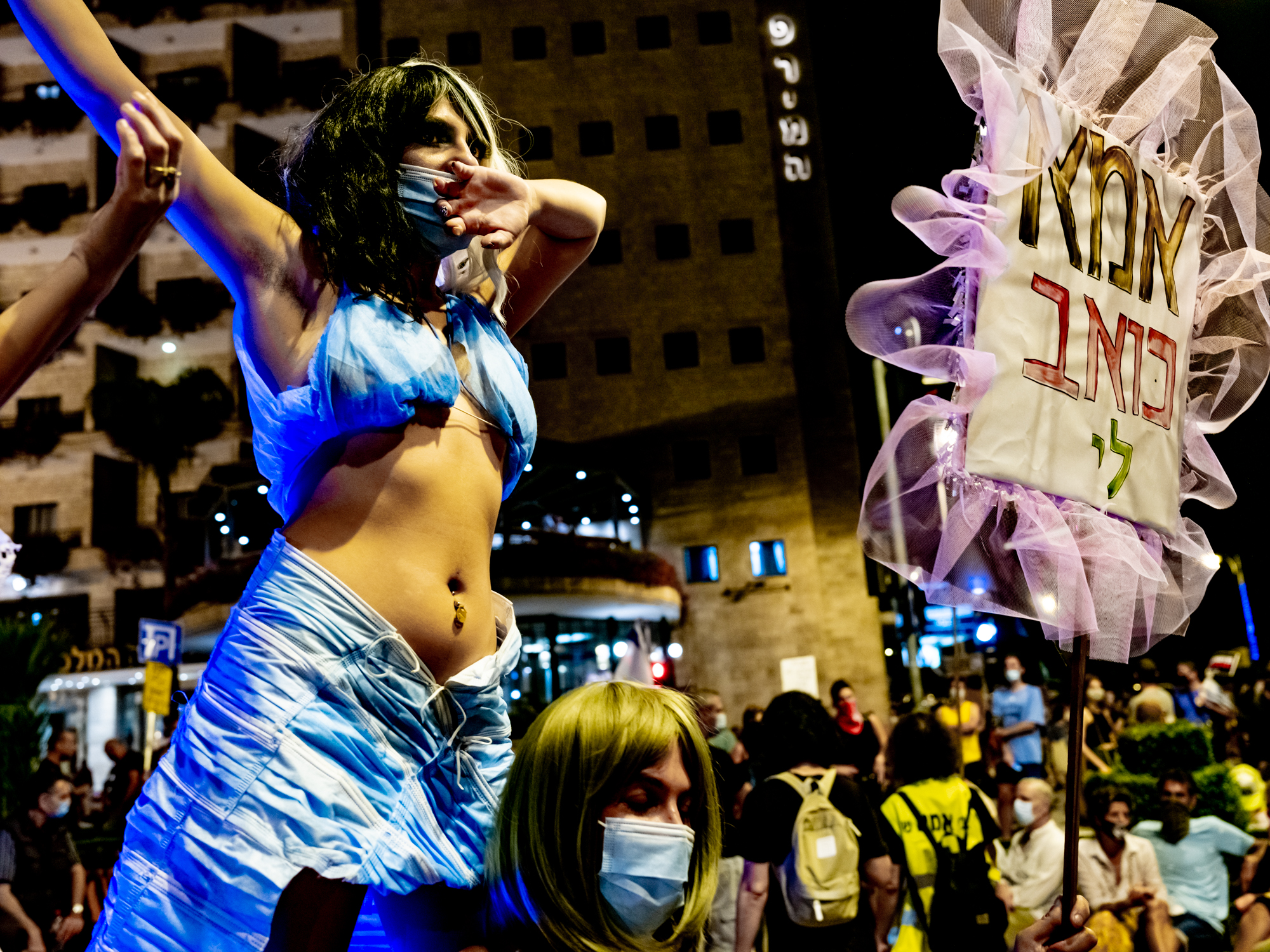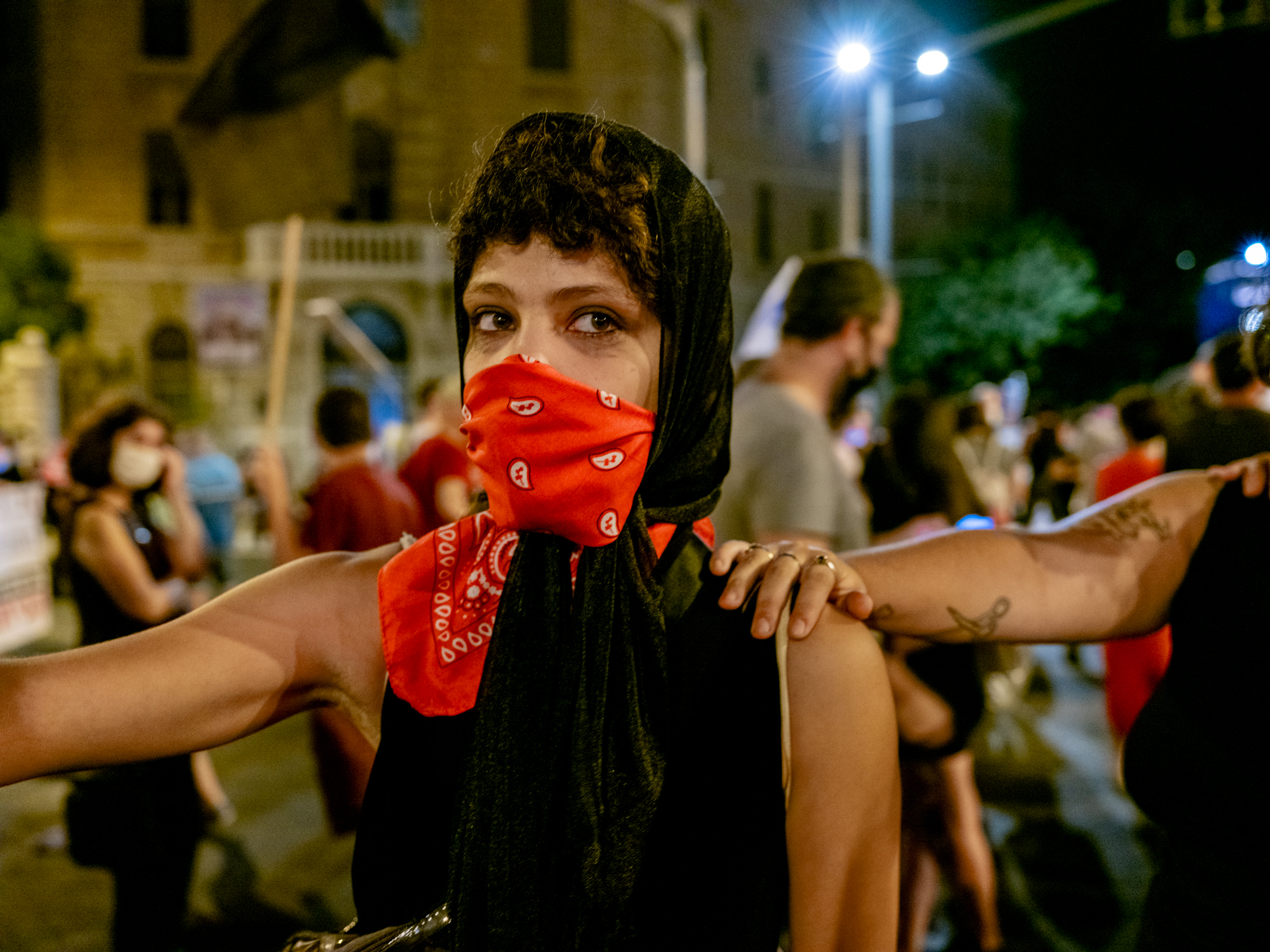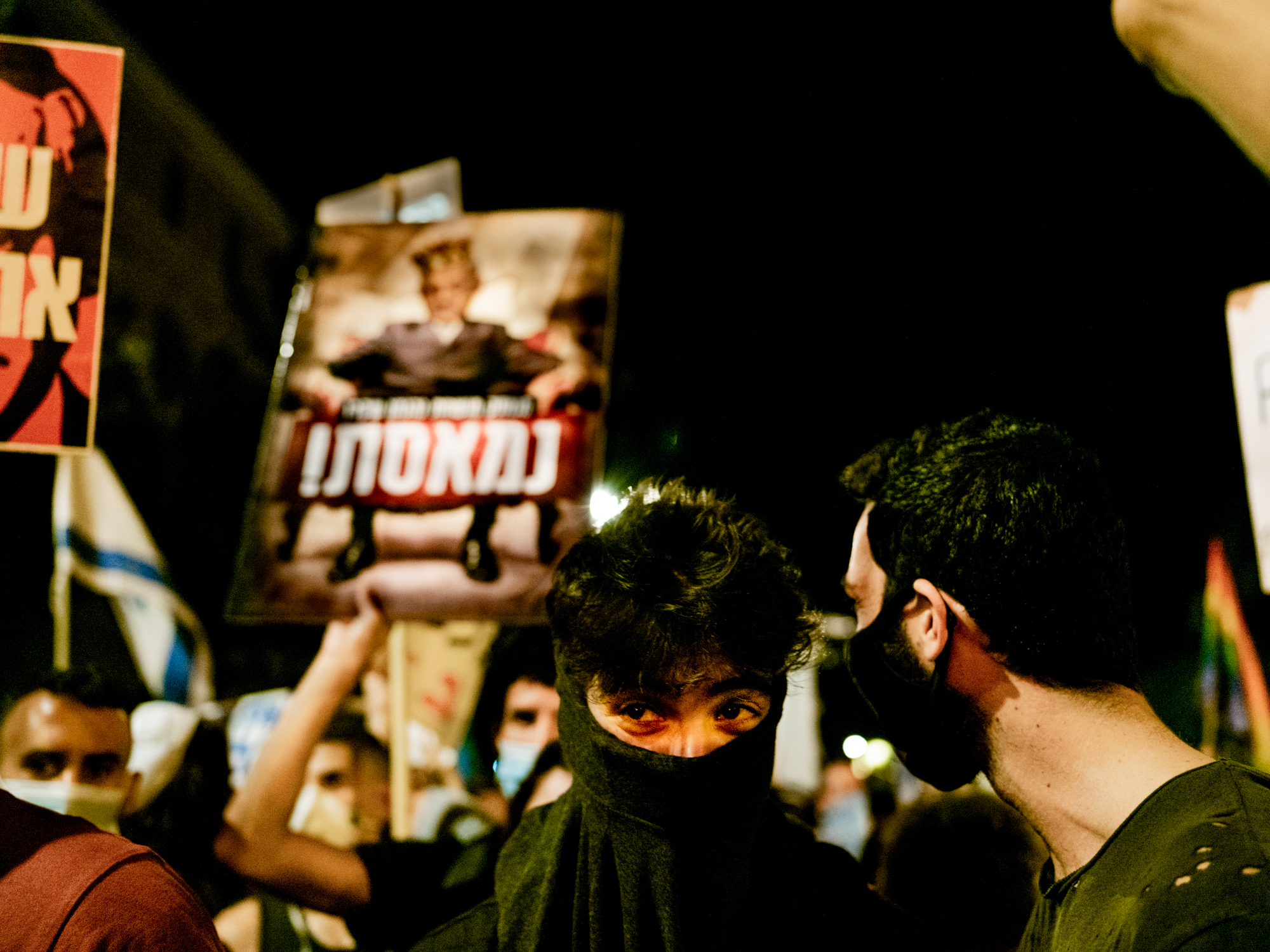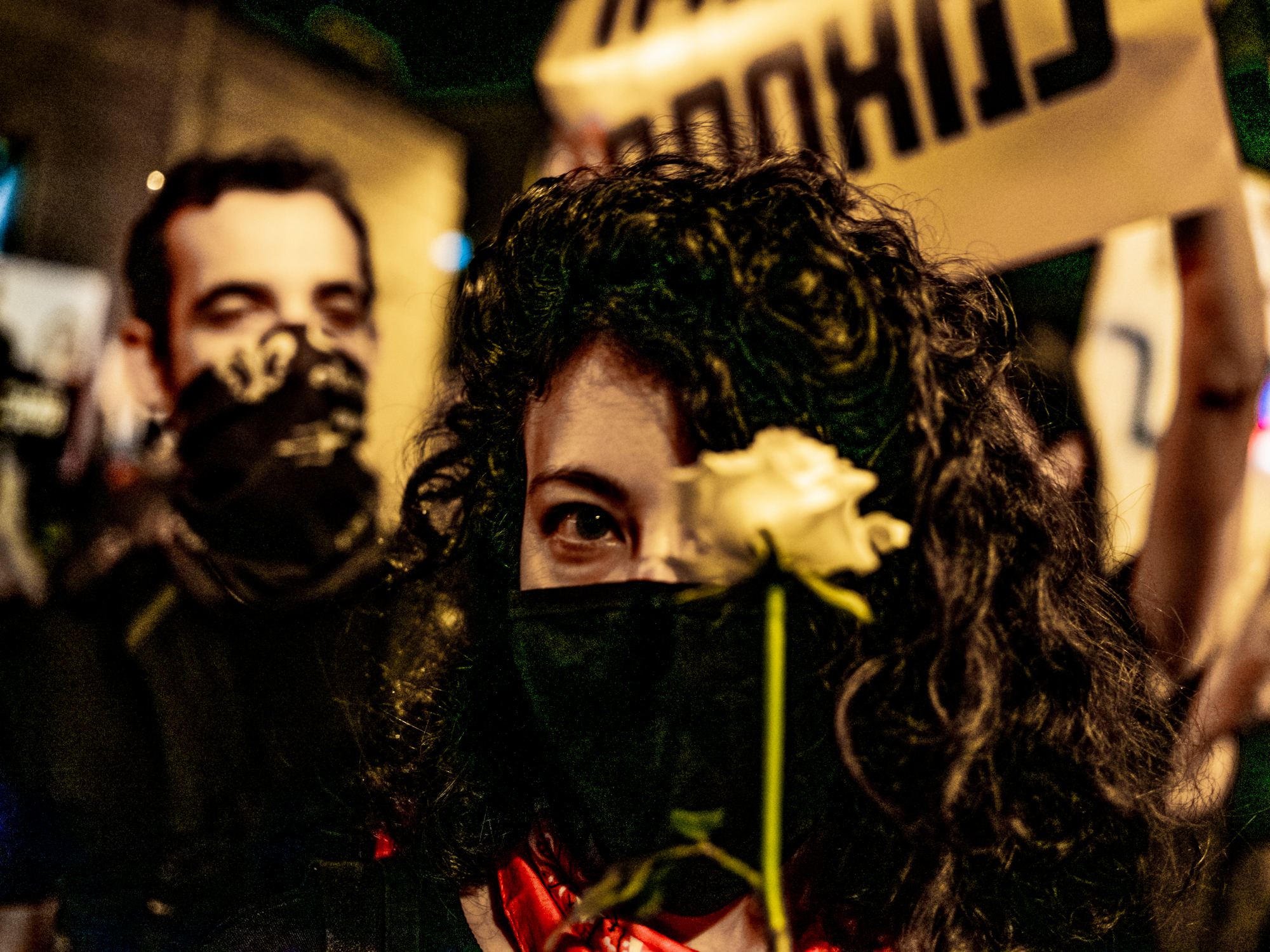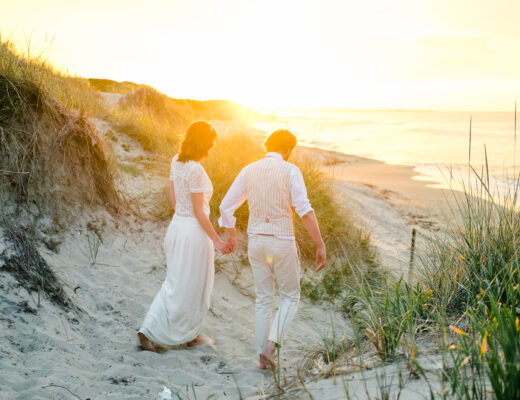The political situation in Israel in the last year or two seem to be very unstable – Prime Minister Benjamin Netanyahu, being unsatisfied with his unfruitful efforts to establish a strong right-wing government, as well as dealing with serious police investigations, led the country to three elections in a row within less than one year before he managed to establish a wider, yet very unstable, coalition with a lack of internal trust. Above all that – Covid-19 has arrived, and the dis-functioning new government seems not to cope well with that and with its economic side effects. Especially after the opening of his trial, in late May, many Israelis feel that Netanyahu is not capable anymore to lead the country, while others still support him.
The situation is of course much more complicated, but we are here to deal with photography, so let’s keep it simple and not fully explained and leave those who are interested in Israeli politics to look for other sources. We just need a bit of it as an essential background.
Being frustrated from the situation, some groups of citizens have begun to protest in various cities, especially in Jerusalem and Tel Aviv, since the outbreak of the pandemic, even in a period of very severe public health restrictions. At the beginning, mainly left-wing supporters (the opposition to Netanyahu) were active in these protests, but they were soon joined by protesters who lost their jobs due to the Coronavirus and felt that the government was not supportive enough in order to prevent their economic collapse.
Protests are not uncommon phenomena in Israel, but usually have very little effect on the authorities and rarely are massive or very frequent. However, in the last month or two, these demonstrations are spreading throughout the country. The main ones are taking place in front of the Prime Minister’s official residence in Jerusalem, where thousands – and sometimes myriads – of people gather a few times a week. No one can predict to what kind of effect on the political scene those protests may lead, but the demonstrations themselves are amazing: unlike most previous protests, these ones are not led by veteran activists, and not even by a central organizing group, but rather by various groups with a variety of agendas who have few things in common – a deep disappointment with the government and a demand for the resignation of Netanyahu.
The most interesting protests are the ones that take place on Saturday nights and led by massive numbers young people – students and other 20-30 years old, for many of whom this is the first time they go out to protest. Since many of them are students or practitioners of performing arts – a field that was totally paralyzed since March due to Covid-19 restrictions – the Jerusalem demonstrations of the last weeks are characterized by extraordinary creativity, with plenty of street performances, colorful costumes, live music and even many who practice meditation quietly in the midst of the crowd. All that is just demanding to be photographed, not only for its news value (I am not any more a photojournalist as I used to be some 20-plus years ago), but also for its artistic and sociological aspects.
The downside of it from a photographer’s point of view is that the most interesting events take place at night, with the not-so-bright street lights in the area. Not believing that a strobe can do justice to such events, and with the natural desire to keep my gear light and ready for quick response (things get very energetic sometimes, and the police incite violence at some of these demonstrations), I naturally first brought there my trusty APS-C format Fujifilm X-T2 with 2-3 lenses. Although a bit older model, this trusty camera still serves me well and usually produces very high-quality images. However, when there is a need to push it to extremely high ISO levels, it – like most APS-C and even FF cameras – cannot do enough justice to the scenes it captures. The digital noise causes many of the pictures to look dull, and even after editing efforts, I do not feel that they are good enough for my standards.
So after the first night protest I attended, I decided to try something else, and brought along my beloved giant – GFX 50R – equipped with the amazing GF 45 f/2.8 R WR. I love using this great combination for high-quality street and documentary photography; but what really struck me with this camera since I bought it back in December 2018 was its ability to produce beautiful images even in dark places, using it in high ISO. This is not just due to its plenty of pixels, but also thanks to camera’s ability to render colors so beautifully, based on its relatively big pixels that inhabit the surface of the 44X33 mm sensor – and helping to create amazing dynamic range. I usually take it to less hectic places, but had already some experiences with it also in crowded situations, such as the feast of Purim in a Jewish Ultra-Orthodox neighborhood in Jerusalem, where totally drunk men dance energetically for hours inside a synagogue, or Good Friday in the Via Dolorosa, where masses of Christian pilgrims squeeze into the narrow allies of Jerusalem’s Old City and almost miraculously manage to make their way into the Holy Sepulcher (all that, of course, in pre-pandemic times). But from that there is still a long way up to deciding to bring that black giant to night demonstrations, between thousands of protesters and hundreds of policemen.
Happily, for such amazing photographic capabilities, the GFX 50R is a relatively lightweight giant, and can be reasonably handled even in chaotic environments. I still bring my XT-2 with me, equipped with 2 lenses – XF 16 f/2.8 R WR, for moments that require a wider lens and still lightweight equipment (I don’t have yet an ultra-wide lens for the GFX system) and XF 16-55 f/2.8 R LM WR for situations that demand a much more versatile setup; but most of the time they are all left in my backpack, and the GFX 50R + GF 45 f/2.8 (a 36mm FF equivalent) does the job for me. I have already used it up to ISO 25,600 for some scenes in the darker corners of the protest area, an ISO level I have never thought I would use, and got acceptable results. Off course, working with medium format camera – especially in extreme lighting conditions and usually wide-open, or almost wide-open, apertures – require a more careful approach to focusing than with an APS-C or FF camera, but I believe that the effort is justified.
All the attached photographs were taken by me with this combo during late July to mid-August protests in Jerusalem.

